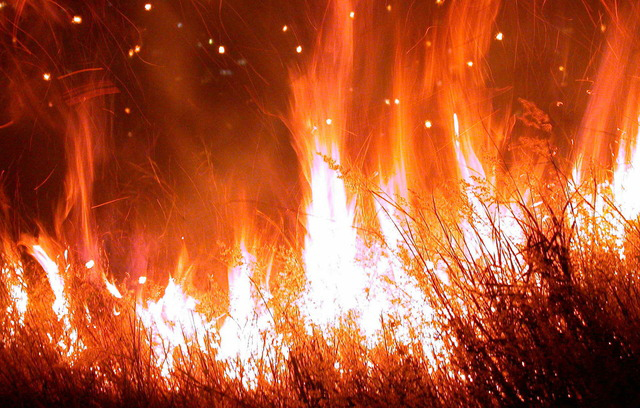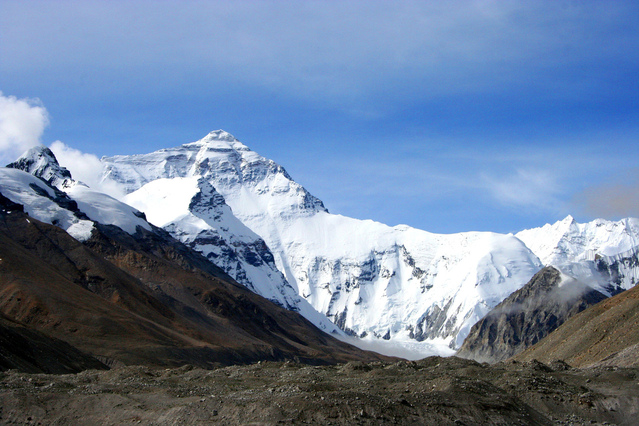Program manager in NOAA’s Climate Office helps research projects take flight
Scientists from the National Oceanic and Atmospheric Administration (NOAA) and several major universities will soon embark on a national research mission, FIREX-AQ, flying high above western wildfires to measure and track dangerous pollutants.
“The only warnings people really get when there are wildfires are that your house might burn down,” said alumna Monika Kopacz, S.M. '05, Ph.D. ’09. “We know the smoke is toxic and dangerous, but we still don’t know when the smoke is most dangerous, and how it is affecting people.”
Kopacz, who earned her Ph.D. in applied mathematics and atmospheric chemistry at the Harvard John A. Paulson School of Engineering and Applied Sciences (SEAS), won’t be onboard the aircraft making measurements, or on the ground interpreting data. But she has played an important behind-the-scenes role from the very beginning.
She works as program manager in NOAA’s Atmospheric Chemistry, Carbon Cycle, and Climate (AC4) Competitive Research Program, a program that has awarded more than 20 grants that helped launch this project from concept to high-flying reality.

Kopacz played an important behind-the-scenes role in a research project that will track dangerous pollutants from western wildfires.
Working on the other side of the research dynamic, as awarder rather than awardee, is a role Kopacz didn’t imagine while she was a Ph.D. student in the lab of Daniel Jacob, Vasco McCoy Family Professor of Atmospheric Chemistry and Environmental Engineering at SEAS.
Set on pursuing a Ph.D. since age 5, she found a perfect marriage for her skills and interests at the intersection of applied math and atmospheric chemistry. In Jacob’s lab, Kopacz used satellite data and advanced math to track carbon monoxide emissions, generating inverse models that identified the origins of air pollution.
“I really enjoyed that my work was so societally relevant. Even though I was just sitting at a computer writing code, I could feel the importance of it,” she said. “Air pollution is something that touches all of us, everyday. You can see it, smell it, and sometimes even feel it.”
Looking to conduct research with even more practical applications, Kopacz pursued a postdoctoral fellowship at Princeton University, where she studied black carbon soot deposited in the Himalayas and Tibetan plateau. The soot, generated by diesel engines, was falling onto glaciers and causing them to melt.
That research impressed upon Kopacz the complex nature of environmental problems; while banned in many urban areas, these high emission diesel engines were still causing serious environmental degradation, only in a less obvious way.

During a postdoctoral fellowship at Princeton University, Kopacz studied black carbon soot deposited in the Himalayas and Tibetan plateau.
Seeking to broaden her perspective on the atmospheric chemistry field, she jumped at the management opportunity in the AC4 program.
The competitive research program funds atmospheric chemistry and carbon cycle research projects. Kopacz takes submissions to an annual call for proposals through the peer-review process to make grant recommendations.
Depending on the budget and NOAA priorities, AC4 sometimes posts a small call and funds only a handful of projects, while other years the program receives dozens of proposals and makes up to 20 awards.
When making funding recommendations, Kopacz seeks out projects that complement work going on in NOAA labs, leveraging collaboration to enhance results. While sharing in the success of so many different projects is gratifying, the work is not without downsides.
“It can be heartbreaking sometimes. Even when we have great years and can fund a lot of proposals, with a 40 percent success rate, that means that 60 percent of applicants are still getting the ‘other’ letter,” she said. “We just can’t fund everything and we shouldn’t even if we could, but it can still be very tough sometimes.”
Another challenge Kopacz faces is keeping up with such a broad research field. Although she doesn’t spend time in the lab, she must stay knowledgeable about the latest technologies, trends, and changes that affect atmospheric chemistry.
She feels a great amount of satisfaction when AC4-funded projects yield exciting results, but the process is slow going. For instance, one of the first projects initially planned and funded in 2014, a study of methane emissions from fracking, is set to have a huge milestone in a few weeks—the release of a report in the National Academies of Science.
“A few years ago, we were all scratching our heads, wondering what to do about these methane emissions,” she said. “Now, in just a few weeks, these results should tell us what to do next. To see this work take shape is very rewarding.”
Inspired by those successes, Kopacz stays focused on research areas that will drive the field in the future. She expects to see many projects centered on emissions from consumer products, like perfumes and paints, which studies show now rival vehicle emissions as a pollution source in greater Los Angeles.
The opportunity to stay at the edge of the latest research, while helping scientists make valuable contributions to the lives of millions of people, is a powerful motivator for Kopacz.
“It can sometimes be a challenge to convince people to appreciate that science itself is important, and that basic research will lead to great discoveries,” she said. “But what gets me out of bed in the morning is the fact that I work on air pollution, and I am helping people and helping to save the environment.”
Do you have an interesting story you'd like to share with your fellow alumni? We'd love to hear from you! Contact the SEAS Office of Communications.